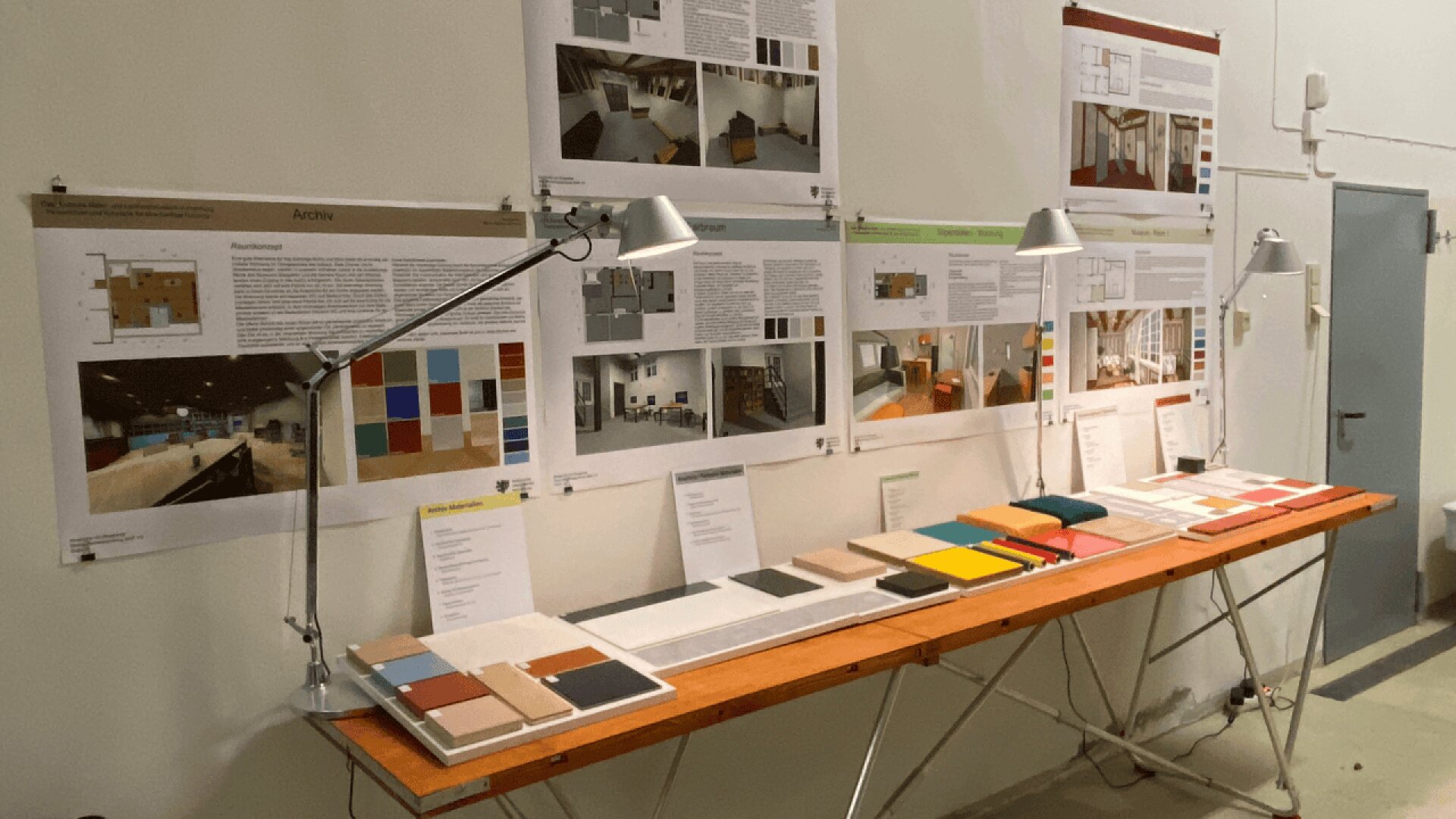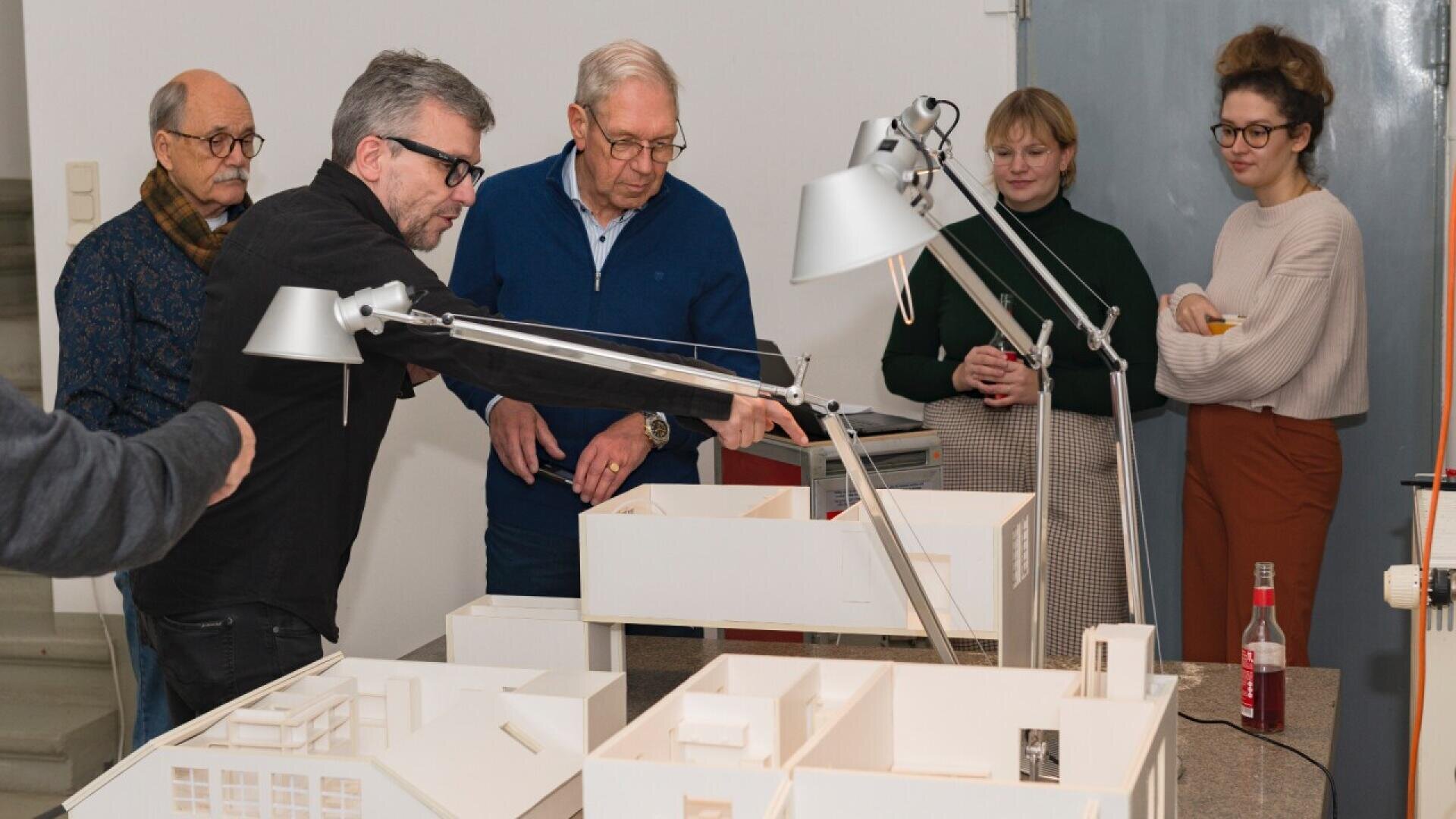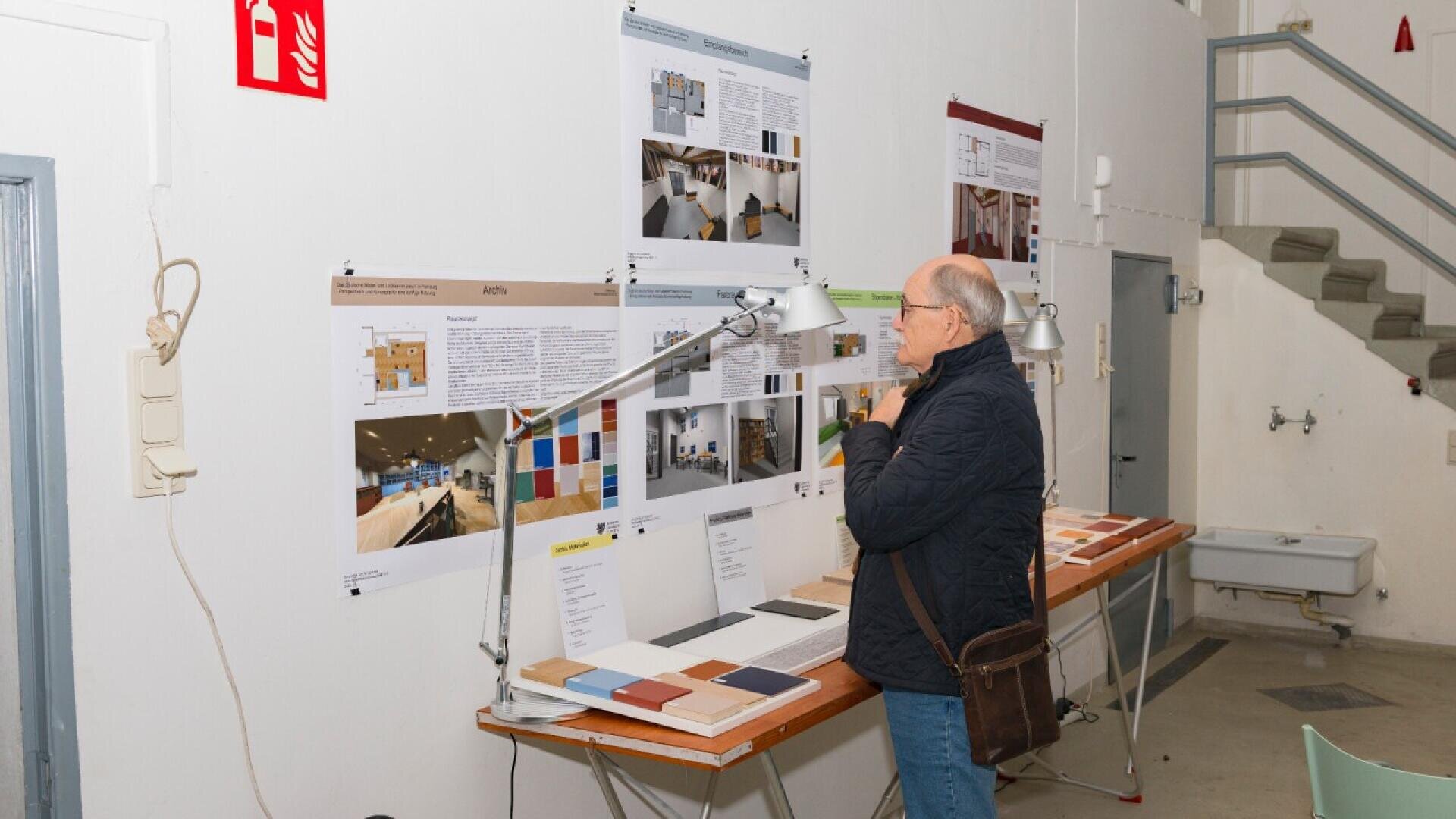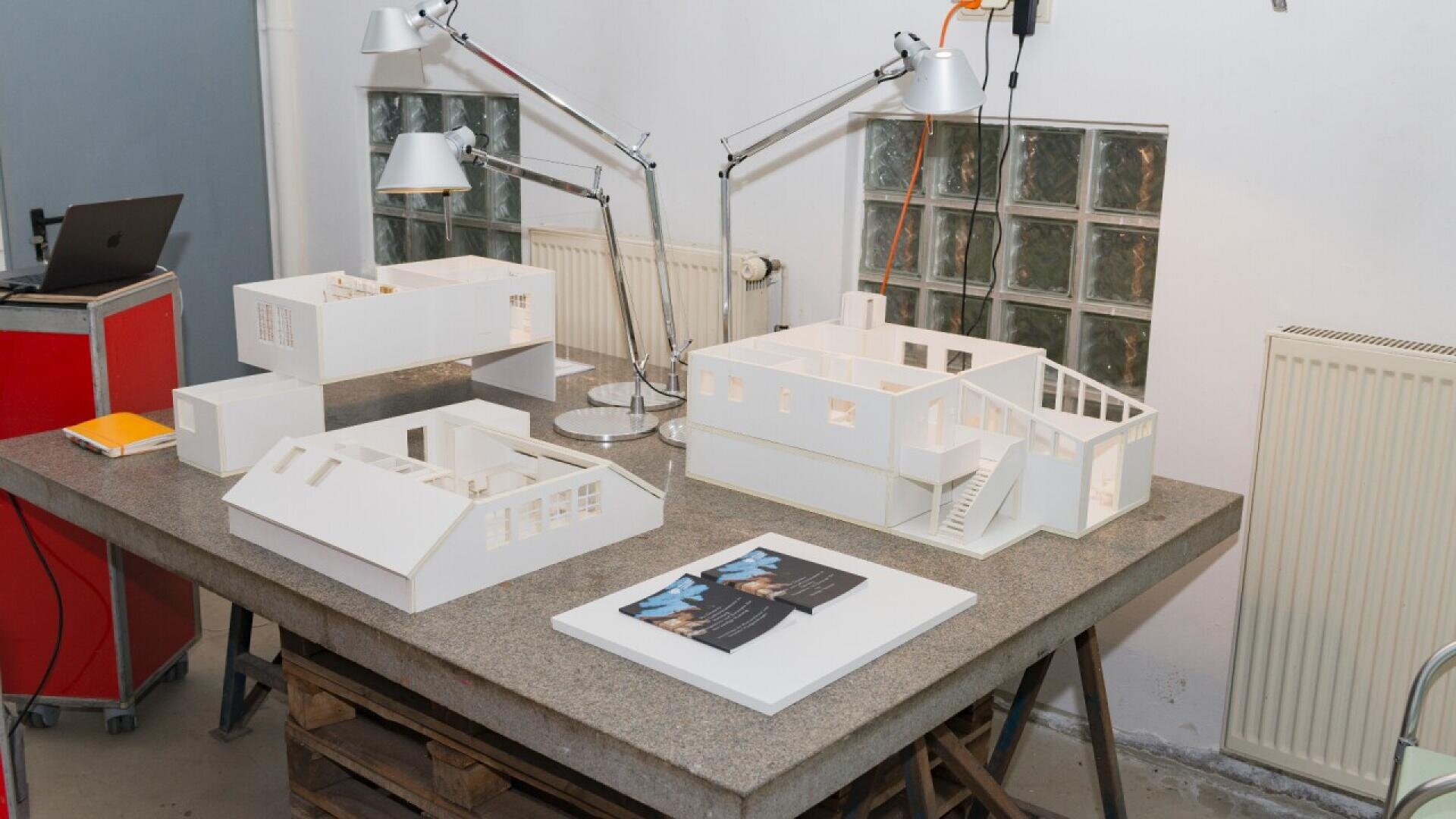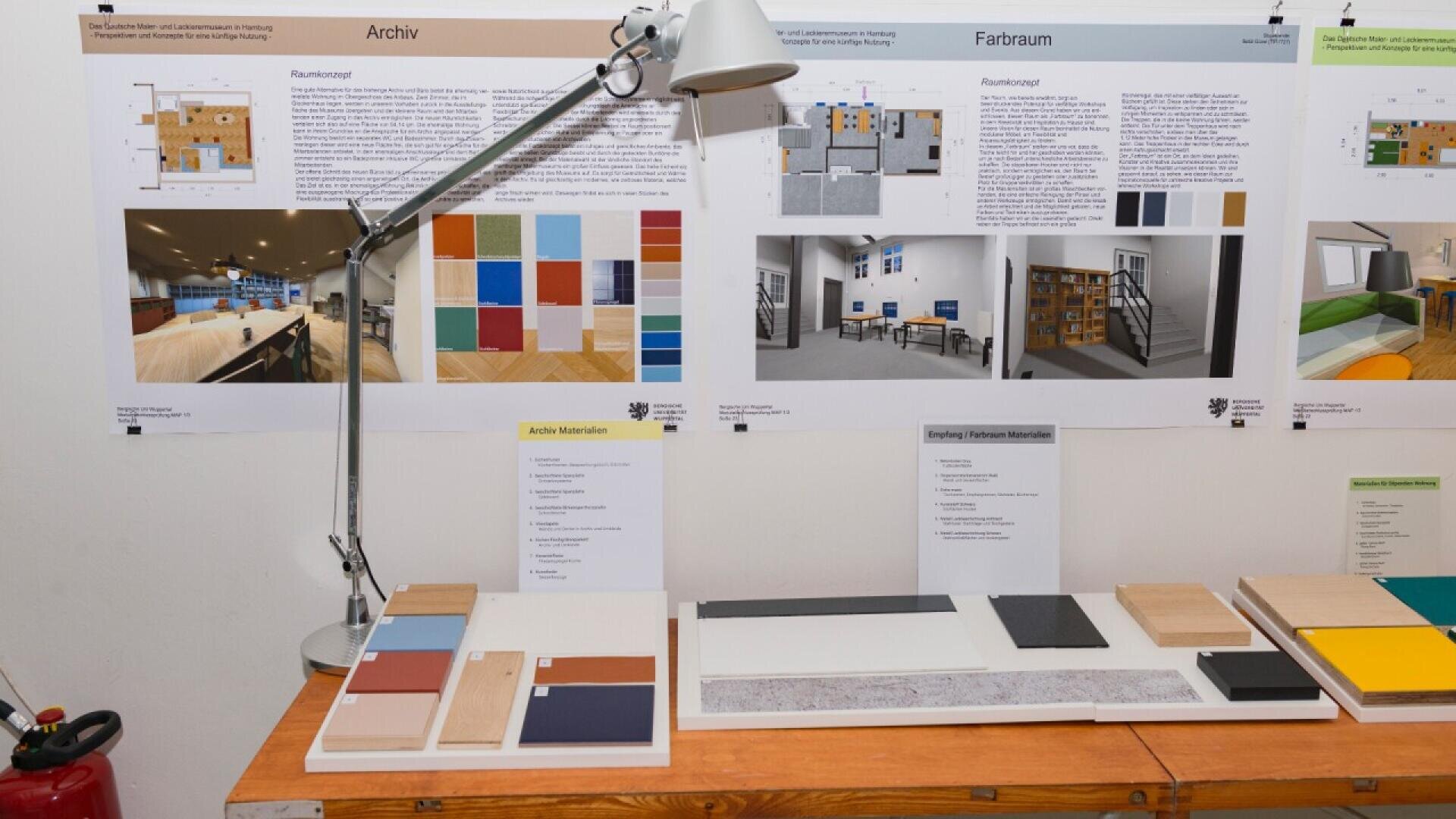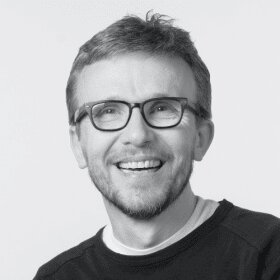Museum is awakened from its slumber
Many treasures lie dormant in the German Painting and Varnishing Museum. The sponsoring association wants to expand and modernize it. The first drafts for this were presented back in November 2023.
By Thomas Heyen
The German Painting and Varnishing Museum at Billwerder-Billdeich 72, near Billbrook, presents 800 years of the history of the painting and varnishing trade in Germany. In addition to numerous historical tools and utensils as well as a complete workshop, the museum also includes a large archive of books and magazines that is unique in Germany and attracts art historians from Germany and abroad, but the archive is not open to the public and can only be viewed on request.
Thomass Heyen ((2)) can be entered. The building is also in need of renovation, says Ulrich Seiss (49). Among other things, the heating, windows, roof and sanitary facilities need to be renewed. The deputy chairman of the sponsoring association therefore has big plans for the museum, which is housed in a listed farmhouse that is more than 400 years old. It is to be renovated and extended this year, and an extension to the bell house from 1600 has been leased externally by the City of Hamburg until spring 2023. "Now we have also rented the extension," says Seiss. It previously housed an apartment (80 square meters) on the second floor and a workshop (100 square meters) on the first floor, while the museum archive and an office are located under the museum's roof. "But it's all far too small and has been a makeshift solution since it started 40 years ago," says the 49-year-old. The archive also includes recipe books (on mixing paints), books from the 17th century, old designs, tools and materials, "usually donations from companies, guilds and vocational schools". However, all of this is simply stored because there is no more space in the exhibition areas.
New entrance area and a foyer with a small café
The plan is to house the office and archive in the upper extension on around 60 square meters and to open the archive to interested parties in the form of a library. "But the space available for this is still limited," says Seiss. That's why he wants to rent additional rooms - on the campus of the vocational school for wood, paint and textiles in Mundsburg. "Then our materials can be used for training students," says Seiss, who is annoyed that these extensive documents are hardly ever used and gathering dust: "A museum doesn't just exist as an end in itself, but is also an educational and cultural space." In Billwerder, on the other hand, more incentives are to be created so that groups from daycare centers and schools can visit more often, and the exhibition space can be expanded quite easily by removing a partition wall between the extension and the museum. The museum is also to have a new main entrance - via the extension, barrier-free. Seiss and his colleagues are planning to create a foyer on the first floor "where visitors can also have a coffee".
The new entrance area already has a name: "Farbraum Hamburg". Workshops are to be offered there, up to 35 visitors can take a seat and listen to lectures. Seiss wants to "create interactive offers for young people". The house should "no longer just be a classic showcase museum". The association members also want to make the house more interesting for non-craftspeople, "to make them curious about the craft and increase the appreciation of traditional craftsmanship". The 49-year-old has already secured an Internet domain: farbraum-hamburg.com. However, the website does not yet exist, and a scholarship apartment (30 to 40 square meters) is also to be set up in the new space in the basement. "Then, for example, master students or student teachers can live there for a few months and do research in the museum," says Seiss, who was supported by his Wuppertal students in planning the redesign: "They developed the new usage concept." The conversion of the corner room is to be carried out by the association itself for the first time this year.
"We have already received donations for this. "It is still unclear when the other measures can be tackled, says Seiss: "That depends on the funding." He is therefore in contact with the city and other potential supporters, such as foundations, and is working on raising funds. The renovation of the two buildings and the conversion of the main building are likely to cost "several hundred thousand euros", says Seiss. "As soon as we have the money together, the work can begin." The monument protection office, which manages the existing buildings, has signaled that it is in agreement with the plans. Ideally, everything could be renovated and converted by 2025.
Impressive ceiling paintings from the Baroque period
Ulrich Seiss commutes between his home in St. Georg, the painting museum and the University of Wuppertal. There he teaches the color technology/interior design/surface technology course and trains prospective vocational school teachers. "I come from a family of painters in Mainz, where I did an apprenticeship as a painter," he says. He then studied color technology and interior design in Hamburg. Seiss has been a member of the association that runs the museum for ten years and has been on the board for two and a half years.
In addition to the bell house, the museum also includes an old, listed threshing floor on the other side of the street. Further elements of the permanent exhibition are presented there - tools, machines, materials and lots of information about crafts and design techniques. On the second floor of the bell house is an impressive ceiling painting from 1670 (Baroque). "With this and its wall paintings and stucco decorations, the house itself represents the craft of painting," emphasizes Seiss. In the early 1980s, the paintings were uncovered and partially reconstructed - just in time for the opening of the museum in 1984. Since then, the association has been a tenant of the houses, which belong to the city of Hamburg. The museum is financed exclusively by donations, admission fees and the regular contributions of its 140 members. It is maintained by volunteers like Seiss.
The museum is open from February to November on Saturdays and Sundays from 2 to 5 pm. Special openings are offered by appointment by telephone. Visitors always have the opportunity to be guided through the rooms by members of the Friends for one and a half to two hours. Admission costs 8 euros. Guided tours are included in the price. A flat rate of 80 euros is charged for a special opening, regardless of how many visitors are registered.
